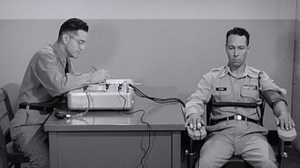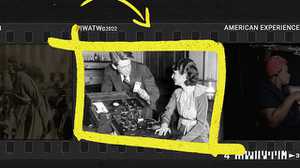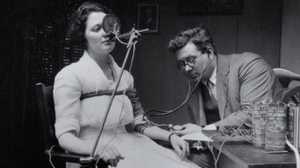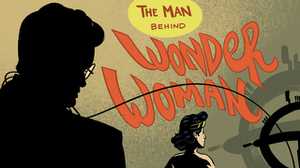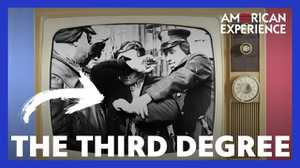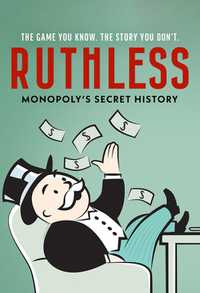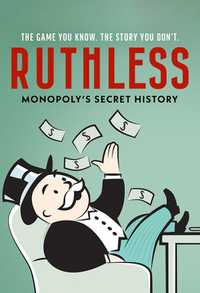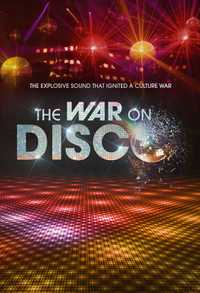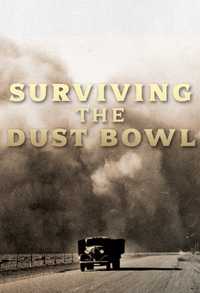THE LIE DETECTOR
Lisa Kort-Butler, Sociologist: We've all lied at some point. We've all tried to figure out when someone else is lying to us. We use these visual clues, whether it's looking for people to avert their eyes, or blushing or they shift their body weight, giving off these tells, essentially.
Narrator: It was an ambition as old as humanity itself. In the first decades of the twentieth century, three very different researchers claimed that by monitoring the clues within our bodies, they were able to strip away the veils of deceit, detect a lie, and reveal the truth.
Douglas Flowe, Historian: People would be able to receive a fair trial, be interrogated in a way that was humane.
Ken Alder, Historian: You determine guilt or innocence by use of a machine that itself can't be corrupted, doesn't have prejudice, treats everything objectively.
Narrator: But this powerful tool proved tragically prone to abuse.
Ken Alder, Historian: The idea is that the machine is doing the detecting, but of course, that can't be true. It's the human operator of the machine that's doing the actual detecting.
Geoffrey C. Bunn, Psychologist: People thought that it was going to uncover truths which you yourself may not have even been aware of. And they were frightened of it.
Narrator: Over time the lie detector acquired power and reach beyond anything its creators could have imagined. Millions of Americans were being tested every year, thousands of lives changed forever.
Alger Hiss (Archive): I am not, and never have been a member of the Communist Party.
Lisa Kort-Butler, Sociologist: It becomes a tool in figuring out not just are they telling me the truth or lying, but are you really who you say you are?
Frankie Bailey, Criminologist: They were peddling this idea of being able to use science to discover truth, that there is some objective truth that we can arrive at, with technology.
Narrator: The lie detector was a uniquely American phenomenon, an amalgam of crime, science, mass media, and charisma. It fed on doubt; and bred the suspicion and jealousy that finally consumed the lives of its inventors.
Ken Alder, Historian: Like Frankenstein's monster, it escaped its creators’ control. Indeed, everyone's control.
Scene 1: John Larson And College Hall
Police Training Director (Archive): Attention…hands on hips…one, two, three four, five…stick em up!
Narrator: John Larson wasn’t like the other cops. The twenty-nine year old was a newcomer to California from New England. He joined the Berkeley Police in 1920, quickly proved himself the worst shot in the department, and was such a bad driver that he wrecked two squad cars in a single day. Worst of all, as far as the old-timers were concerned: he was the only officer in the country with a PhD. He spent his spare hours auditing courses on criminal psychiatry, and he was writing a book on fingerprinting.
Ken Alder, Historian: John Larson was a working class guy who really had a kind of righteous indignation. He isn't always that good with people, but he does have a vision of clean policing, scientific and clean policing.
Narrator: In the early 1920s policing wasn’t scientific, and it was rarely clean. Most cases were solved by confession, a terrifying number obtained by what was called “the Third Degree.”
Douglas Flowe, Historian: It was expected and it was accepted that officers would torture people. You can use any means necessary, even if that means mutilating their body, to get them to confess. But a lot of the time people who are being tortured were innocent, and sometimes they would end up maybe confessing just to make the torture stop.
Narrator: Fortunately for Larson, his boss - Berkeley Police Chief August Vollmer – was a pioneer of scientific, humane, and honest policing.
Ken Alder, Historian: Vollmer was the great police reformer of the early 20th century. His special tool for making cops themselves law abiding was to give them scientific tools, things like fingerprinting and analysis of crime scenes and categorized methods of operation.
Narrator: Perhaps the most revolutionary technology on the horizon was what scientists were calling a “deception test.”
Geoffrey C. Bunn, Psychologist: There was a vision at the time whereby crime was going to be solved through an instrument that could detect a person in the act of telling a lie.
Frankie Bailey, Criminologist: There might not even be a need for a judge and jury because the machine would reveal to everyone whether or not this person was lying or telling the truth.
Narrator: Vollmer knew that an effective deception test was a huge challenge but in the spring of 1921 he asked his scientist cop to build one. Larson was taking on a daunting scientific challenge, using borrowed equipment; his only assistant, a local high school student.
Ken Alder, Historian: Vollmer brought Leonarde Keeler to study under Larson. One is a Ph.D dissertation writer, the other one is a high school student. But they became a kind of team, an oddball team to some extent.
Narrator: For decades, scientists in Europe and America had been looking for clues that a subject was lying. They’d measured the rate and depth of a subject’s breathing, their blood pressure, or the time it took to answer a question. They claimed varying degrees of success, but no single measurement could reliably detect a lie. So Larson decided to combine several different monitors in the same device.
Ken Quattro, Writer: He built a cumbersome machine that allowed him to take continuous blood pressure readings, and he also put a tube around the person's chest so he can notice the variations in the respiration.
Ken Alder, Historian: The way that the machine registered the results gave a permanent graphical record, which would ideally be introduced as evidence in court.
Geoffrey C. Bunn, Psychologist: It was a genuine attempt, a well-meaning attempt to try to solve crimes without using violence. The truth would come out through science.
Narrator: In the spring of 1921, Larson’s device was ready for a trial run. Vollmer sent him to investigate a series of thefts at College Hall, a women’s dorm on the University of California Berkeley campus. The case was trivial - someone at the dorm was stealing money, jewelry, and clothing from her house-mates - but if Larson was able to solve it, the implications would be profound.
He started by running tests on each of the women in turn. After the first round of interviews, Larson thought he had his culprit. Sudden changes in blood pressure, heart rate, and breathing: Helen Graham was hiding something. Graham was grilled repeatedly, until she confessed, quit college, and left town. Larson called his device the cardio-pneumo-psychograph, but reporters came up with a catchier name. The press treated the College Hall case as a triumph, proof of the lie detector’s revolutionary potential. But for Larson, doubts began creeping in when the College
Hall thefts resumed after Graham’s departure. She wrote him from her exile, to explain her confession. Graham had indeed been hiding something, but it had nothing to do with the College Hall case.
Matthew Barry Johnson, Psychologist: This young woman actually had a really troubled history. She'd been sexually abused early in life, and in her fear that this machine was going to uncover her secrets, she made admissions to try to forestall the questioning.
J. Patrick O’Burke, Polygraph Examiner: A polygraph’s a very blunt instrument. Human emotions and other extraneous variables cause, you know, physiological arousals. That was part of the problem in the College Hall case.
Ken Alder, Historian: Larson was never really able to be sure that Helen Graham committed the crime. It's the first big case and right from the beginning, all the ambiguities are there.
Narrator: Larson would spend the rest of his life with a permanent and vivid reminder of College Hall. Over the course of the investigation, he had interrogated the victim, Margaret Taylor, several times.
Ken Alder, Historian: He found out that she had feelings for him and he had feelings for her. And they got married. The newspapers, as you can imagine, loved this.
Narrator: In the wake of the College Hall case, Larson and his bride left Berkeley for Chicago. He planned to study psychiatry there, while exploring new applications for the lie detector at the Institute for Juvenile Research. Larson would continue to refine his lie detector, but for the time being he was wary of using it for criminal investigations; the stakes were too high. “There is no test in its present state,” he wrote, “suitable for the positive identification of deception.” But not everyone shared Larson’s scruples.
Scene 2: Marston And Frye
Narrator: In the fall of 1922 Larson received a letter from William Marston, twenty-nine-year-old lawyer, head of the psychology department at American University in Washington DC, and inventor of what he called The Marston Deception Test.
Ken Quattro, Writer: It was just a matter of him putting a blood pressure cuff on a person, pumping it up, and then anytime it went above a certain range it indicated to him that the person was telling a lie. It was very crude in comparison to Larson’s machine.
Narrator: According to its inventor, the Marston Deception Test was practically infallible.
Geoffrey C. Bunn, Psychologist: Marston’s a very gregarious, extroverted character, he made expansive claims for the instrument. And Larson was just the opposite. He was scientifically minded, and far more modest.
Narrator: In 1922, Marston was trying to get his Deception Test introduced in court. So as soon as he read about Larson’s work in the newspapers, he sent a letter asking for details.
Larson gently warned the headstrong inventor that his Deception Test was unreliable. Too late:
already, Marston had wrangled himself and his test to the center of a high-profile murder case. According to the police, James Frye had confessed to killing a prominent Black doctor. Frye said he’d been tricked into confessing.
Matthew Barry Johnson, Psychologist: Marston comes in and examines Frye and reports to the defense attorney, that the confession was false, and that Frye is innocent.
Ken Quattro, Writer: Well, the judge threw it out after about five minutes.
Narrator: Perhaps a time might come, the judge concluded, when lie detectors would determine which witnesses were telling the truth. But not yet. For now, he said, “That is what the jury is for.” A few months later, an appeals court validated Larson’s warning to Marston: his lie detector hadn’t been recognized by the scientific community, so it had no place in court.
Ken Alder, Historian: It's on that basis that - with a few minor exceptions - the lie detector has been excluded ever since from being used as evidence in criminal trials.
Narrator: James Frye spent the next eighteen years in prison; his life collateral damage to Marston’s ambitions.
Matthew Barry Johnson, Psychologist: Frye maintained his innocence throughout his life. He believed that his defense was lost in all of the uproar about the lie detector. The lie detector and Marston became the big story, and his legal defense became secondary.
Narrator: The dream of revolutionizing the courtroom was dead. The lie detector seemed headed for obscurity. In fact, the device, and its creators, were just getting started.
Scene 3: Marston And The Movies
Archive Narrator: It’s January 31st 1928. Dr. William Marston tests his latest invention: the Love Meter. He’s going to find out whether blondes or brunettes react more to love.
Narrator: In 1928, Marston introduced the world to a very different take on his Deception Test: the Love Meter.
Archive Narrator: When results are interpreted, Dr. Marston declares gentlemen may prefer blondes, but brunettes prefer love scenes.
Narrator: The road to Marston’s re-invention had been a long one. In the aftermath of the Frye disaster he gave up on the lie detector, stopped practicing law, and lost his chairmanship at American University. He got a teaching job at Tufts University, but it was a big step down the academic ladder. A more timid soul might have been chastened, but Marston kept right on courting trouble.
Ken Quattro, Writer: He became involved with Olive Byrne, who was one of his students. He went home to his wife, Elizabeth, and he basically told her, “I want her to move in with us.”
Narrator: Marston’s wife Elizabeth was his equal in every sense - she was an accomplished lawyer, and had played a crucial role in designing the original Marston Deception Test. They also shared abundant and unconventional appetites. For some time the couple had been involved with a polyamorous clique of like-minded friends in Boston. So Marston’s proposal wasn’t as outlandish as it might have seemed. Elizabeth accepted, and Olive moved in. Neighbors were told that she was their widowed housekeeper, but still, rumors spread. Marston was fired from Tufts. With his academic career in tatters, Marston revisited his Deception Test - or as he now called it, the Love Meter. Like Larson, he became interested in using it to track emotions. But where Larson’s path led to a juvenile reform facility in Chicago, Marston’s landed him in Hollywood.
Archive Narrator: Carl Laemmle celebrated his 30th year in movies. The entire industry turned out to pay tribute as…
Narrator: In 1928 Marston’s hair color tests caught the eye of Carl Laemmle, the head of Universal Studios. Laemmle was looking for a new way to measure audience response to his movies.
Archive: Man falling down stairs from The Invisible Man (1933)
Lisa Kort-Butler, Sociologist: Marston was in fact using his device to hook up people and gauge audience reactions for these films that were being screened. There's not a lot of detail but we do know that there were edits made to some scenes that were deemed too emotional or too scary or too violent.
Narrator: But instead of building on his success, Marston managed once again to wear out his welcome. At the end of 1929, Marston was released by Universal, and the job he had invented was handed over to an ambitious young upstart.
Leonarde Keeler had come a long way since his days as John Larson’s teenage apprentice at the Berkeley Police Department. Back in 1923, when Larson left for Chicago, Keeler followed August Vollmer to Los Angeles, where the chief had been hired to clean up the LAPD. There, Keeler set about redesigning the prototype that Larson had left behind. Where Larson had obsessed over the device’s limitations and worried about injustice, Keeler dove right in, taking on real cases and racking up “wins”, as he called them.
J. Patrick O’Burke, Polygraph Examiner: Larson was much more guarded and thoughtful about the science, whereas I believe that Keeler thought this is a lot more marketable.
NARRATOR: The press fawned over the young inventor and his futuristic machine. So when Universal tired of Marston, Leonarde Keeler was a natural choice.
But Keeler’s stay in Hollywood was short. As far as he was concerned, the movies were a distraction from the main event. Keeler and his lie detector were headed for the capital of American crime.
Scene 4: Keeler In Chicago
Ken Quattro, Writer: Throughout the 1920s, because of Prohibition, organized crime really took hold in Chicago. Guys like Al Capone became public figures. February 14th, 1929 was the famous St. Valentine's Day massacre where Capone's men just machine-gunned a bunch of guys in a garage.
Narrator: By the time Leonarde Keeler arrived in Chicago at the beginning of 1930, gangland killings had become routine: five hundred since Prohibition, and not a single conviction. But even in Chicago the St Valentine’s Day Massacre stood out. The public outrage inspired a new approach to fighting crime.
Geoffrey C. Bunn, Psychologist: A group of businessmen in Chicago got together and said we need to stop the gangsterism in our city. We need to put some money into scientific crime detection, and create a national institution for solving crimes.
Narrator: The Scientific Crime Detection Laboratory was established at Chicago’s Northwestern University in the fall of 1929. It featured specialists in fingerprinting, ballistics, crime scene photography, handwriting analysis, and toxicology. Leonarde Keeler became the Lab’s expert in lie detection - with a new machine of his own design.
Ken Alder, Historian: The goal for Keeler was to turn this delicate scientific apparatus that Larson had created into a robust box that could be easily transported and was simple enough to use that even a cop - not some Ph.D. cop but just an ordinary cop - could use the device.
Narrator: Keeler’s design added a new feature: a pair of electrodes that attached to a subject’s hands.
Geoffrey C. Bunn, Psychologist: You measure the electrical conductivity of the skin, on the theory that as a person is telling a lie, they get nervous. If they get nervous, they start to sweat more, and the skin can conduct electricity better.
Narrator: Keeler named his new device the “polygraph;” the word for any device that recorded several symptoms. But Keeler patented the machine and made the name his own: for most people “polygraph” soon became just another word for “lie detector.” Even as Keeler began marketing his machines to police and investigators, he was building up a promising, and lucrative new application.
Ken Alder, Historian: Keeler's brought in to solve a number of crimes at banks and one of the things he discovers is that many different employees of the bank have been committing petty crimes, pocketing cash on occasion. Keeler said “I will come back and retest these people regularly every six months and you will be amazed that these will become your most honest employees.” And this began to spread really widely.
Narrator: Where a criminal investigation often involved a single interrogation, Keeler tested over a thousand bank tellers and department store clerks during his first two years in Chicago. He split those fees with the Crime Lab; this side work soon became his main source of income.
Keeler introduced his Polygraph just as the practice of interrogation was about to undergo a profound change. It started in 1931, when the government released a study of lawlessness in policing. Americans had been hearing about the Third Degree for years, but still, they were shocked by the horrors chronicled in the Wickersham Report.
Douglas Flowe, Historian: This sort of treatment is not isolated to some of the large cities. But it's also happening in small towns. It's happening in the South, it's happening in the West, and it's happening in the states of the heartland.
Narrator: In the wake of the Wickersham Report, the Supreme Court finally banned confessions obtained through violence.
Matthew Barry Johnson, Psychologist: We know that there continued to be physical abuse in interrogation, but it put a demand on law enforcement to come up with less brutal methods.
Narrator: For ten years, very few police departments had shown any interest in the lie detector; as New York Mayor Jimmy Walker put it, “the old-fashioned night-stick is far more effective than new scientific ideas.” But now that brutality had been ostensibly banished from the interrogation room, law enforcement started giving the polygraph a second look.
Ken Alder, Historian: It wasn't banned from police investigations. If you confess during a police investigation, even if it's oral, even if it's one time, as long as there's a witness, you know, it'll count.
Scene 5: The Interrogation
Text Onscreen: Leonarde Keeler, Chicago Crime Lab.
Coroner: Have a seat Joe. Right here. Sit down there, Joe.
Keeler: We're going to take a little test on you Joe. And ah want you to sit perfectly quiet. This won’t hurt you in any way. We’re going to ask you a few questions while you’re connected to this apparatus.
Narrator: “The success of this device,” Keeler explained, “is attributed in large measure to the psychological effect it has in bringing about confessions.”
Coroner: You know George Evans?
Joe: No.
J. Patrick O’Burke, Polygraph Examiner: Most people don't understand how powerful a psychological wedge is in the interview process. People will see this instrument and it causes them to just crater and go ahead and confess.
Coroner: Joe - did you kill George Evans?
Joe: No!
Frankie Bailey, Criminologist: We want to believe something is certain when, in fact, if we're looking at a polygraph test, it's based on the skill and the biases of the technician. It's open to interpretation.
Douglas Flowe, Historian: The lie detector doesn't really play the role that it's supposed to play in sanitizing the interrogation room. It doesn't perform that function.
Ken Alder, Historian: What Keeler did was show that the lie detector could get leads and confessions. And to the extent he made the lie detector a more aggressive form of interrogation technique, the more it appealed to police officers.
Narrator: When Keeler started at the Crime Lab, he was one of the only operators in the country, and his department almost an afterthought. Within two years, he was doing more business than all other departments combined. In 1933, he was given an award for the most outstanding civic contribution to Chicago. Cops came from around the country to study with him at the Crime Lab; they spread the word back home. Keeler was becoming a media darling, in no small part because of a woman he’d met back in California. He and Katherine Applegate first crossed paths while he was entertaining friends with his lie detector. They married shortly after he moved to Chicago.
The couple made the town their own.
Ken Alder, Historian: Kay was looking for an identity of her own as a crime fighter, so she trained up in handwriting analysis. They really were living a high life. They liked to drink and then solved cases in their spare time. They have a kind of career as a crime fighting duo.
Narrator: Not everyone was impressed. John Larson worked just a few miles away from Keeler, but they inhabited different worlds.
Ken Alder, Historian: Larson goes to the Institute for Juvenile Research to see if he can work with children to get at what they're really feeling, and resolve the issues underneath their sort of turn to criminality.
Narrator: As Keeler’s fame grew, so did Larson’s resentment.
Lisa Kort-Butler, Sociologist: In some of Larson's commentary, you see this sort of disdain he has for what Keeler in particular, has done, sort of misusing the science from his point of view.
Ken Alder, Historian: Larson really felt that Keeler had betrayed him, had betrayed the lie detector, and turned it into this kind of tool of intimidation. And he really began to despise Keeler.
Scene 6: The Odd Couple
Narration: John Larson had an unlikely ally in his quiet war with Keeler. By the late 1930s William Marston had walked away from careers in academia, law, and movie production. He had two children with Elizabeth, and two more with Olive; they all lived together in the suburbs north of New York City.
Ken Quattro, Writer: Olive’s children thought their father was a man who had died. They were never allowed to ask questions about him.
Narrator: Marstons’ life was a web of lies, but he had a knack for marketing himself as a purveyor of truth. The lie detector suited him perfectly: sensational, enigmatic, and endlessly adaptable. He couldn’t stand by and watch Leonarde Keeler become the face of lie detection.
Ken Quattro, Writer: In 1938 Marston wrote basically an entire book talking about how he invented the lie detector. And he especially attacked Leonard Keeler.
Narrator: Even though the book contradicted almost everything Larson believed about the lie detector, he agreed to write an introduction endorsing its author. Their shared dislike of Leonarde Keeler overrode any misgivings. But not for long.
Ken Alder, Historian: Marston goes to Madison Avenue, and said he could offer his services to investigate people's emotional responses to products.
Ken Quattro, Writer: He would hook up his lie detector to a bunch of men to get their reactions after they used the Gillette Razor Blades. And unsurprisingly, they all loved the Gillette Razor Blades.
Ken Alder, Historian: Gillette was happy to print some of these ads, but they wanted to check with other experts before they pursued this ad campaign further. And they went and approached John Larson. And he actually conducted real experiments and measured their responses. And found no difference with Gillette and rival brands.
Ken Quattro, Writer: Marston contacted John Larson, and he said, “If you will validate what you know I've said in these ads, I'll give you $30,000.”
Narrator: The marriage of convenience between Marston and Larson was over. Not only did Larson refuse the bribe, he reported Marston to the FBI. Marston managed to avoid criminal charges, but he’d burned another bridge.
Geoffrey C. Bunn, Psychologist: The whiff of scandal followed him everywhere. But he had the last laugh, of course.
Narrator: In 1941 Marston tried on another career, pitching a new comic book character to Detective Comics, better known as DC.
Archive: Wonder Woman Comics
Ken Quattro, Writer: The character he came up with was totally innovative, and extremely popular. Comic books by 1940 were selling hundreds of millions of copies. By late 1941, 1942, Marston is on top of the world.
Narrator: Wonder Woman’s most powerful weapon was familiar to anyone who had followed Marston’s career: a golden lasso that could compel anyone to tell the truth.
Lisa Kort-Butler, Sociologist: Marston’s showmanship is important as the work that Keeler does, as they contribute to the lie detector becoming ingrained in the American consciousness.
Narrator: But Marston had just a few short years to enjoy the phenomenal success of Wonder Woman. He contracted polio in 1944, was diagnosed with cancer the following year, and died in the spring of 1947. William Marston went out rich, famous, and widely heralded as the inventor of the lie detector.
Act 3
Scene 7: A New Kind Of War
Narrator: Even as Americans were still celebrating the end of the Second World War, a new struggle was taking shape, against a new kind of enemy.
J. Patrick O’Burke, Polygraph Examiner: The fear is that Russian agents can penetrate us, that Russian agents can steal our technology, that they can infiltrate our government. The threat was terrifying. And so what can we use that will make us feel better? And polygraph was really the only thing that filled that niche.
Narrator: Six months after America’s nuclear program was revealed to the world at Hiroshima, Leonarde Keeler was summoned to the government’s top secret uranium plant at Oak Ridge, Tennessee. Keeler’s orders: to determine “the loyalty, integrity, reliability, mental stability, and suitability" of the plant’s employees. The program started by focusing on select workers, but soon everyone at Oak Ridge - five thousand people - was being tested on the lie detector every six months. Fear and suspicion were seeping into the national psyche; the lie detector’s moment was at hand. So was Leonarde Keeler’s: in the summer of 1948, he was drawn into the first big show trial of the Cold War.
Archival Narrator: Alger Hiss, former high state departmental official, is branded a Communist spy…His accuser, Whittaker Chambers, self-confessed former Communist, testified before the Un-American Affairs Committee…
Whittaker Chambers, Archival: Mr. Hiss represents the concealed enemy…
Narrator: The House Un-American Activities Committee had taken up Whittaker Chambers’ accusations against Alger Hiss half-heartedly. There was one conspicuous exception: freshman Representative Richard Nixon despised Hiss and was working around the clock to bring him down.
Alger Hiss, Archival: I am not, and never have been, a member of the Communist Party.
Narrator: The case boiled down to one question: which one of these two men was lying? Few Americans agreed with Nixon; they trusted Alger Hiss as President Roosevelt had trusted him, and President Truman. But on the 16 of August 1948, as the hearing was wrapping up, Hiss walked straight into Nixon’s carefully-laid trap. “The committee has a difficult problem here,” he told Hiss, “I wonder if under the circumstances you would be willing to take a lie-detector test?”
Lisa Kort-Butler, Sociologist: As the government becomes interested in figuring out who may be spying on behalf of the Soviets, threatening people with lie detector tests becomes a tool of discerning who those people might be.
Narrator: Nixon assured Hiss that the test would be conducted by Leonarde Keeler himself. Hiss understood the law. His objections and evasions covered two pages of transcript; the test never happened. But Nixon understood political theater: the test was never the point. Hiss’s credibility had been irreparably damaged. "I don’t know anything about polygraphs,” Nixon later declared, “but I know they’ll scare the hell out of people." When a grand jury decided that Nixon had been right all along about Alger Hiss, millions of Americans drew an ominous lesson.
Ken Alder, Historian: We needed to have this constant vigilance against enemies within. And that's what lie detectors did.
Scene 8: The Wages Of Deceit
Archival: Call Northside 777
Jim McNeil: Mr. Keeler’s all ready for you, Frank.
Keeler: Sit down Frank, just take it easy, relax.
Narrator: Around the same time that Keeler was being drawn into the Alger Hiss affair, he played himself in a major Hollywood feature, opposite one of the biggest stars in the business.
Keeler: Now just face forward, don’t watch the machine.
Narrator: Call Northside 777 recounted a recent case in which Keeler had helped free a man wrongfully convicted of murder.
Keeler: You’re six feet tall, aren’t you?
Jim McNeil: Five foot nine.
Keeler: Just a minute now. Just Yes or No all the way through.
Narrator: He was as well-known as almost any lawman in the country.
Ken Alder, Historian: To the extent that Keeler made the lie detector more coercive, he became kind of poster boy for lie detection interrogation gone wrong.
Police Chief: What’s the verdict?
Ken Alder, Historian: But then after the war, Keeler gets involved in what today we would call an innocence project. Keeler begins to sell the lie detector not just as something that will find the people are guilty, but to use it to exonerate them.
Narrator: But Keeler’s conversion from jailer to liberator had hardly begun before it was interrupted by his own multiplying problems. His marriage was coming apart. Leonarde hired a private detective to follow his wife.
Ken Alder, Historian: Kay had been cheating on him. It's clear that the fault was as much his as hers - he'd been drinking very hard and he was often a mess.
Narrator: Marital troubles, alcoholism, and paranoia were all common afflictions in the profession.
J. Patrick O’Burke, Polygraph Examiner: You're sitting there for hours and hours and hours doing mental combat with someone who may be the worst criminal you've ever seen or someone who's absolutely innocent. If I wrongly accuse you, your life is over with. If I say you’re innocent and you're guilty and I let you go, you're going to walk out to go out and commit more crimes. That stress is just palpable to most examiners.
Narrator: At the end of 1948 Leonarde Keeler, the man who’d made the lie detector a feature of American life, suffered a major stroke. He died on September 20, 1949, at the age of forty-five.
Scene 9: Frankenstein’s Monster
Narrator: John Larson had watched Keeler’s downward spiral from Logansport, Indiana, where he was medical director of the state’s psychiatric hospital. Larson was widely admired for improving the lives of his patients, but his attempts to use the lie detector in therapy had met with limited success.
Ken Alder, Historian: Larson held out hope always for the device as just a way to get people to sort of open up and perhaps even resolve underlying complexes within them. Whether this is a successful strategy is a different story.
Narrator: But this earnest, quiet man was consumed by jealousy for his dead rival. Larson obsessively gathered news clippings, letters, and reports for a book that, he believed, would finally expose Keeler’s fraudulence. “Unmasking the Lie Detector,” it was called; Larson hoped it would drive a stake through the heart of his own creation.
Frankie Bailey, Criminologist: The machine had gotten out of his hands. He starts out with this machine, he's going to use the scientific method, he has controlled experiments. Now you have this psychological interrogation and people are telling you their secrets because they believe that the lie detector is actually working.
Ken Alder, Historian: The lie detector is used first at Oak Ridge, but then it expands. It's used by the CIA. It's used at nuclear facilities. And it's used on police officers and the army to quite a heavy extent, often just as a kind of prophylactic, just as a kind of constant testing to make sure that people have a sense that they're being watched.
NARRATOR: And businesses were catching on. From banks to fast-food chains, thousands and then millions of applicants and employees were screened with lie detector tests.
J. Patrick O’Burke, Polygraph Examiner: The Cold War caused this explosive growth in America. It was largely ignored anywhere else in the world, but it was explosive in terms of how quickly it spread in the United States.
Archival/Text On Screen: “I Married Joan,” NBC 1953
Tom: Hello Jedd
Jedd: Hello Tom
Tom: I see you brought the machine.
Jedd: Yeah, it’s real heavy too.
Narrator: More and more Americans were encountering lie detectors in problematic situations. But on television, in movies, and comics, it was never wrong.
Jedd: Ah, what is your name?
Joan: Joan Stevens.
Tom: See that Jedd? Needles are all moving evenly. That’s because she told the truth.
Jedd: Ah, huh - now…
Douglas Flowe, Historian: In popular culture, we've come to see lie detectors as entirely accurate. And that in itself is probably the most powerful aspect of a polygraph test.
Joan: I confess! I did it, I did it. I confess. I’m sorry I did it. But I did it. It’s done and I did it. I confess. I did it, I did it, I did it…
Archival: Media montage
Ken Alder, Historian: From the era of the big headlines, to the era of the comic strip, and to the movies…
Archival Movie Man: What’s it tell you now?
Ken Alder, Historian: …the lie detector in a sense, lived in the media.
Jack Webb: You got 16 positive reactions?
Suspect: Yeah? What would that make?
Jack Webb: Ya lied Henry. 16 times.
Frankie Bailey, Criminologist: Most of us do not have direct experience with serious crime. And so much of what we think we know about about policing, about prisons, lie detection, polygraphs, most of that is coming from exposure to popular culture in mass media.
Archival: You feel that thing around your fingers, Bill? And this thing over here on your arm? You’re hooked up to a lie detector!
Lisa Kort-Butler, Sociologist: The media and the movie industry propelled this instrument into this place in pop culture that we have yet to escape.
Narrator: This aura of infallibility was helping to fuel the phenomenal spread of the lie detector. In fact, it was a temperamental instrument, easily misinterpreted. Only a small percentage of operators had any professional training. Abuses were everywhere.
Ken Alder, Historian: In practice, there weren't that many Communist spies in the United States. But what there were, were people with secrets to hide - secrets that might make them vulnerable. And one of the sort of saddest parts of the lie detector story happens in this period where in fact, the lie detector is used to out people as homosexuals, particularly at the State Department.
Narrator: “The purge of the perverts,” it was called; The Lavender Scare. Through the 1950s, anti-Communist witch hunts made more headlines, but gay Americans made far easier targets. The accused were offered a chance to clear their names with a lie detector test, but the odds of success were vanishingly small. In the State Department alone, one thousand employees lost their jobs, and suffered the social consequences of being labelled homosexuals.
Douglas Flowe, Historian: Ultimately, while the lie detector was supposed to circumvent the need for coercion, it ended up being a part of the list of options that the state could use to coerce and manipulate someone.
Narrator: Larson could only watch as his invention was used in ways he could never have imagined in those hopeful days back in Berkeley. "Beyond my expectation," he wrote, "through uncontrollable factors, this scientific investigation became for practical purposes a Frankenstein’s monster, which I have spent over forty years in combatting." His book - his only weapon - had grown to nine thousand pages. He died of a heart attack in September 1965 at the age of seventy-four, sorting through the pages of his manuscript.
Epilogue
Commercial: You get what you want when you want it at 7-11…
Ken Quattro, Writer: In the mid-1970s I was dating a girl who was a schoolteacher. Well, during the summer, she went to 7-Eleven to get a job. She comes out after about an hour and her face is all red and everything, and I go “What happened?” And she goes, “I flunked the lie detector test.”
Interrogator: Have you stolen anything from an employer?
Interrogator: Have you ever used illegal drugs?
Interrogator: Have you been convicted of a felony?
Narrator: In the decades since Keeler introduced the lie detector to banks and department stores, it had spread throughout the American economy. By the 1980s, half the retail businesses in the United States were polygraphing their employees. There were no guardrails on the lie detector’s exponential growth. Things finally came to a head when President Reagan ordered a dramatic increase in the testing of government employees. The public response was overwhelming.
Senator Orrin Hatch: …three hundred thousand honest Americans are branded as liars every year.
Narrator: Reagan backed down, and in 1988 Congress responded to the outrage by passing the Polygraph Protection Act, which effectively banned the lie detector from the business world. Overnight, usage plummeted by ninety percent. But despite all the controversies, the lie detector was too useful to discard entirely: the new law did nothing to limit its use by government, law enforcement, or national security agencies.
J. Patrick O’Burke, Polygraph Examiner: To go to the heart of the question the polygraph probably works better than what a lot of people want to admit, but sometimes it doesn't work as good as what we're hoping it does.
Douglas Flowe, Historian: The lie detector persists even though we understand that it's not necessarily accurate. It's about this uniquely American confidence in technology.
Narrator: For over a century, the lie detector has remained an American phenomenon, largely ignored by the rest of the world.
Ken Alder, Historian: It does speak to a particular way that the United States went about solving really contentious social issues, turning over judgments not to fallible human beings but to machines.
Frankie Bailey, Criminologist: Americans want to believe that somehow there is this one truth, this truth that represents who we are, and we have the ability to reach in and use this technology and determine what it is.
Douglas Flowe, Historian: The lie detector takes a problem that can’t be controlled and turns it into something that, at least in your imagination, can be controlled. There can be a sense of certainty. And Americans are looking for certainty.
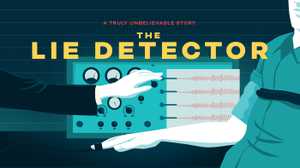
 The Lie Detector
The Lie Detector